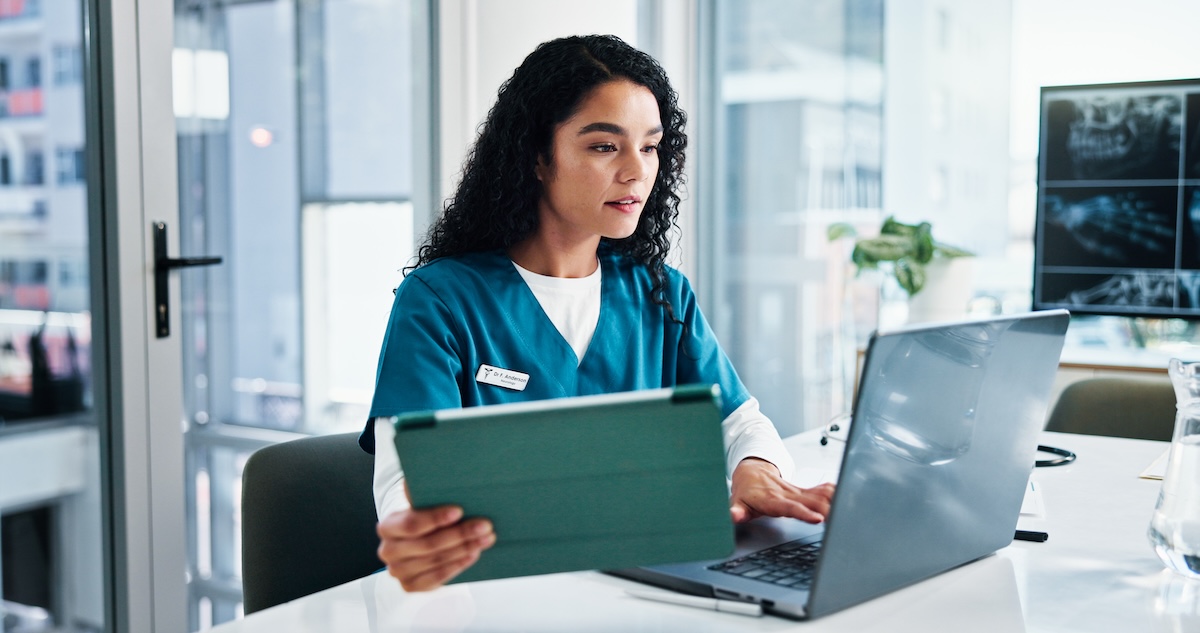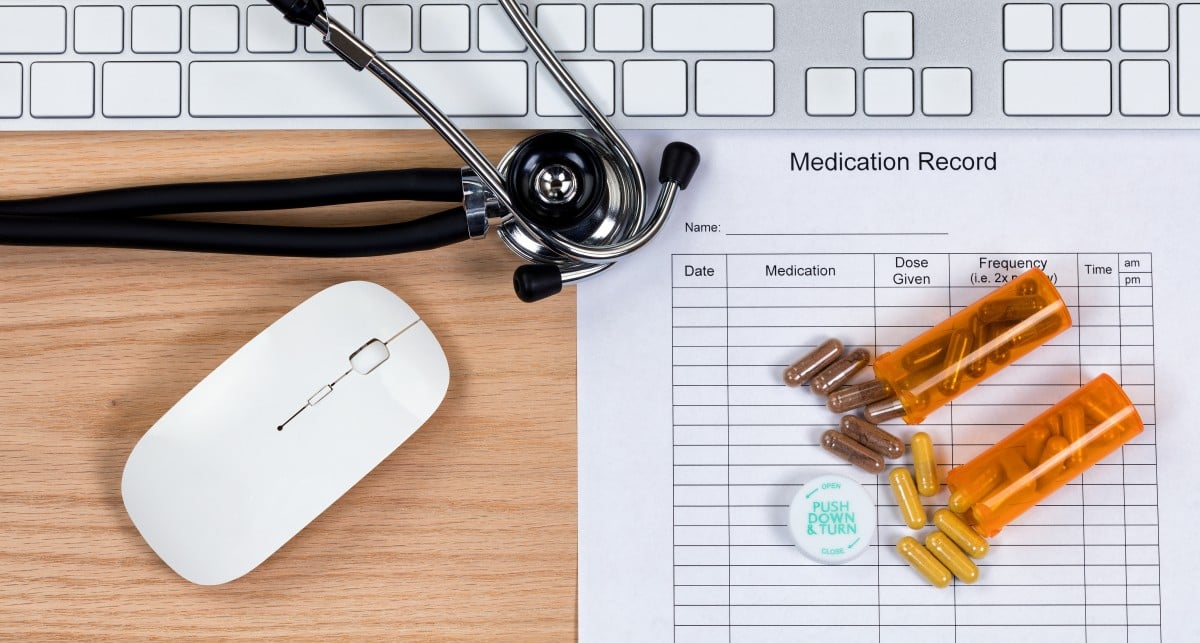Using Patient Education Videos to Support Preventive Care Strategies
As a healthcare provider, you know prevention saves lives. From routine screenings and lifestyle counseling to vaccinations and early detection,...
5 min read
Robert McDermott Dec 15, 2022 9:09:00 AM

In 2019, the pharmaceutical industry spent $83 billion dollars on research and development and the introduction of new drugs for sale. Those medications are intended to be prescribed by physicians and dentists to help patients manage and negotiate medical and dental conditions. But, once you’re prescribing those medications, the responsibility largely falls to you to prevent medication errors, such as identifying harmful side effects from drug interactions and determining if there are contraindications to prevent that medication from being prescribed.
While the financial cost of medication errors is significant, at $20 billion a year, one cannot put a price tag on the more dangerous consequences of those mistakes. However, much like medications can mitigate medical and dental conditions, ePrescribing can help mitigate the risk of medication errors.
Quick Links
Medication errors most often result from a patient receiving the wrong medication, dosage, or prescription instructions. Those errors may be the fault of the prescriber, pharmacy or patient and they can result in patient harm. It’s most important to emphasize that they are preventable.
 Common Medication Errors and Medication Error Examples
Common Medication Errors and Medication Error ExamplesThe FDA alone receives approximately 100,000 reports of medication errors each year. In fact, 41% of Americans report either personally experiencing a medication error or knowing someone who has. And, in long-term care facilities and hospitals, medication errors happen between 8-25% of the time. Far from being isolated incidents, medication errors happen more frequently than any of us would like. The most common mistakes on the prescriber side include:
All of these scenarios can result in costly and dangerous situations for patients and prescribers alike.
When we talk about medication errors, many of us have a consequence that comes to mind. For many, that’s the risk to the patient, who either takes the wrong medication or the right medication in the wrong way.
Sadly, studies suggest that nearly 100,000 lives are lost and at least 1.5 million people are harmed each year by medication errors. Further, nearly $3.5 billion in healthcare funds are spent yearly in hospitals to treat the consequences of medication errors. And mortality costs, where care was insufficient if the impact was deadly? $77 billion dollars.
Beyond the impact to life and finances, the longer-lasting impact can be quite damaging as well. As a result of medication errors, some patients may experience long-lasting pain or physical consequences. But, psychologically, the patient’s trust in the healthcare system may be forever damaged and their relationship with the prescriber or pharmacist is likely devastated. As a result, longer term health consequences are likely.
In essence, all parties (patients, physicians/dentists, pharmacists) can be responsible for medication errors. When it comes to patients, errors often result from misunderstandings about changes in conditions that patients are either unaware of or unclear about, like a weight fluctuation or the addition of another drug or treatment. Those errors are best mitigated through solid and communicative doctor-patient relationships.
For doctors, being taxed or rushed can result in poor communication, inaccurate information, quick writing, or simply making mistakes attributable to an overtaxed schedule. Similarly, pharmacist and dispensing errors are connected to ineffective communication and, simply, being in a rush.
However, many other causes of medication errors can be avoided when prescribers take the initiative to consider how they can impact patient care and outcomes. These include:
It is pretty clear that any solution to medication errors will need to assist with a wide variety of potential pitfalls, from faulty communication to overburdened staff.
 How ePrescribing Can Help Prevent Medication Errors
How ePrescribing Can Help Prevent Medication ErrorsOne of the best solutions to minimize medication errors is implementing an ePrescribing solution. For many, they’re seen solely as a way to improve and increase team efficiency. And while one of the big benefits is easing the workload on taxed teams and prescribers, there are many more.
There’s no more miscommunication. No more illegible handwriting or misheard medication names. The name of the medication, the dosage, and the strength are all clear to both prescriber and pharmacist.
There’s no more missing information. You’ll be able to access the patient's prescription history, no matter who wrote the prescription, for medications filled through pharmacies across the country. A robust ePrescription software, like iCoreRx, also provides a Lexicomp drug directory for quick reference to drug information, interactions and contraindications.
You’ll get an alert if you miss something. With solutions like iCoreRx cloud ePrescribing software, you’ll get a notification if you’ve missed an allergy or potential drug interaction.
You’ll save time and effort. With cloud-based flexibility to prescribe from phone, laptop, or desktop computers, you can send prescriptions from wherever you are, without wasting time going to the office, on calls with the pharmacy or being restricted to one workstation at your practice.
You’ll ensure prescriptions make it to the pharmacy. ePrescriptions are sent right to the pharmacy and you receive instant confirmation of receipt. You can send five or six prescriptions at a time without issue. You’ll receive confirmation from the pharmacy and the patient file is automatically updated. There isn’t any question that the prescription was received and properly logged.
Increase speed and accuracy. Because fully-integrated ePrescription software pulls directly from electronic health records (EHR), patient information populates directly from your practice management system, improving accuracy. Other time savers include saving frequently used pharmacies and “Doctor’s Favorites” for commonly-used medication sets.
Ensure EPCS and PDMP compliance.- In addition to all of the above functionality, iCoreRx cloud ePrescribing software provides you the flexibility to prescribe all medications, including controlled substances. States across the country are implementing laws requiring Electronic Prescribing for Controlled Substances (EPCS) as a direct response to the opioid crisis that has swept across the country.
On top of EPCS laws, the vast majority of states require checking the state Prescription Drug Monitoring Program. This database provides the prescriber the full picture of a patient's controlled substance prescription history and keeps a record of the new prescription being filled. iCoreRx can connect directly to your state’s prescription drug monitoring program, ensuring that you stay compliant, preventing you from falling victim to “doctor shopping” and protecting your patients from being over prescribed controlled substances.
In short, you improve communication and accuracy while saving yourself, your team, the patient and the pharmacist time. You keep everyone safer and ensure clear prescriptions that deliver the care your patients need.
If you’re ready to talk about how an ePrescription solution can help your medical or dental practice improve its care, patient outcomes, and help keep everyone safe from prescription medication errors, book an iCoreRx demo today.

As a healthcare provider, you know prevention saves lives. From routine screenings and lifestyle counseling to vaccinations and early detection,...

There’s no denying that the AI boom is here. The American Medical Association reports that 66% of physicians are currently using artificial...

If only managing your practice’s revenue cycle came with a crystal ball. You could spot claim denials before they happen, predict when patients might...

In healthcare, a lot of processes have remained the same for years because, initially, they were the only processes available. For instance, the...

You’re likely familiar with the famous song “I Can See Clearly Now” by Johnny Nash. There are a few ways you might interpret his lyrics when...

Most of us can take a quick look at our home and find a slew of products, from household goods and appliances to our wardrobes, that no longer suit...